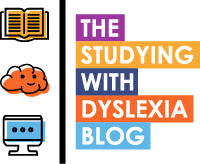Learning to read is important but the conventional ways of teaching reading do not always work for children with dyslexia. Having a stack of resources to hand that makes reading accessible and enjoyable are crucial for learning and attainment. In this article I want to share some useful resources that will guide you in getting the right tools in place for the child that you support whether you are a parent or teacher.
For a child to feel good about themselves regarding their reading capability they need to feel like they are not banging their head against a brick wall. So often dyslexic learners will experience being taught in a way that simply doesn’t work for them and it doesn’t matter how hard a teacher or parent pushes them to learn to read in ways that they think are best, the process is only going to cause anxiety and at best it will be a case of two steps forward and one step back. There is a wealth of low and high tech approaches available now that have been specifically developed to help dyslexic children with reading in the classroom but for some reason these are not mainstream, even though this has been proven to be successful.
We can’t escape the fact that reading is the key to learning and it has to be enjoyable in order for anyone to engage with it ESPECIALLY children. So why make it harder for dyslexic readers? We need to encourage reading but make it more accessible in the classroom and at home.
The recent DEAR For Dyslexia Festival illustrated many of these points and as part of the campaign to make reading enjoyable for dyslexic readers, DEAR For Dyslexia have made available a wonderful set of resources for parents and teachers alike to use in order to encourage reading.
My favourite resource is their free ‘Reading Toolbox Poster’ that gives a great summary of low tech, mid tech and high tech reading tools.
Low tech, mid tech, high tech reading tools?
Let me define what these terms mean as they have an impact on functionality as well as cost.
Low Tech Reading Tools
Low tech reading tools are cheap and easy to acquire items that will help with reading printed text.
For example, using a ruler to focus on a line of text would fit in this category or using highlighter pens to mark text in order to improve contrast and focus.
Low tech tools don’t necessarily need to have been developed for dyslexic reading. Examples of specific, dyslexia focused, low tech reading tools are reading rulers with a ‘window’ that surrounds a piece of text thus providing focus for a particular sentence, or a coloured overlay that reduces the glare from white paper upon which the text is printed.
Mid Tech Reading Tools
Mid Tech reading tools are more technological in nature and whilst they will tend to cost more than the Low Tech reading tools they can often be more effective when used appropriately.
A good example would be the use of audio books or the use of a reader pen. In my latest online course entitled “What is Assistive Technology and how can it help my child”, I demonstrate the Reader Pen from Scanning Pens, a small hand held scanner that reads out printed text. These are particularly useful in enhancing independent learning and can be used in exams thus replacing a human reader. This, for some, will make the exam experience much less stressful.
Note regarding the above video: More recent changes to how exams are conducted by the Joint Councils For Qualifications do not allow members of staff into exam rooms to act as human readers whereas in the past this was common practise. These changes have taken place since the above video was recorded. More information on how to conduct examinations can be found by clicking here.
High Tech Reading Tools
High Tech reading tools are often software or app based tools that assist with reading text observed on computer or tablet screens. They can often use hardware such as mobile phones or tablets to take pictures of printed text and then read out that text. There are literally hundreds of products that you can choose from and to find out more about them feel free to check out the Assistive Tech category on this blog by clicking here.
Download this useful Reading Tools summary from #DearForDyslexia
So what are your experiences or thoughts about reading tools?
Please comment below and let me know if you have tried some of these reading tools. If you take a look at the #DEARForDyslexia resources, please let me know what you think of them.
Finally, please subscribe to my blog if you haven’t done already so that I can keep you up to date on new articles and my monthly giveaways.





